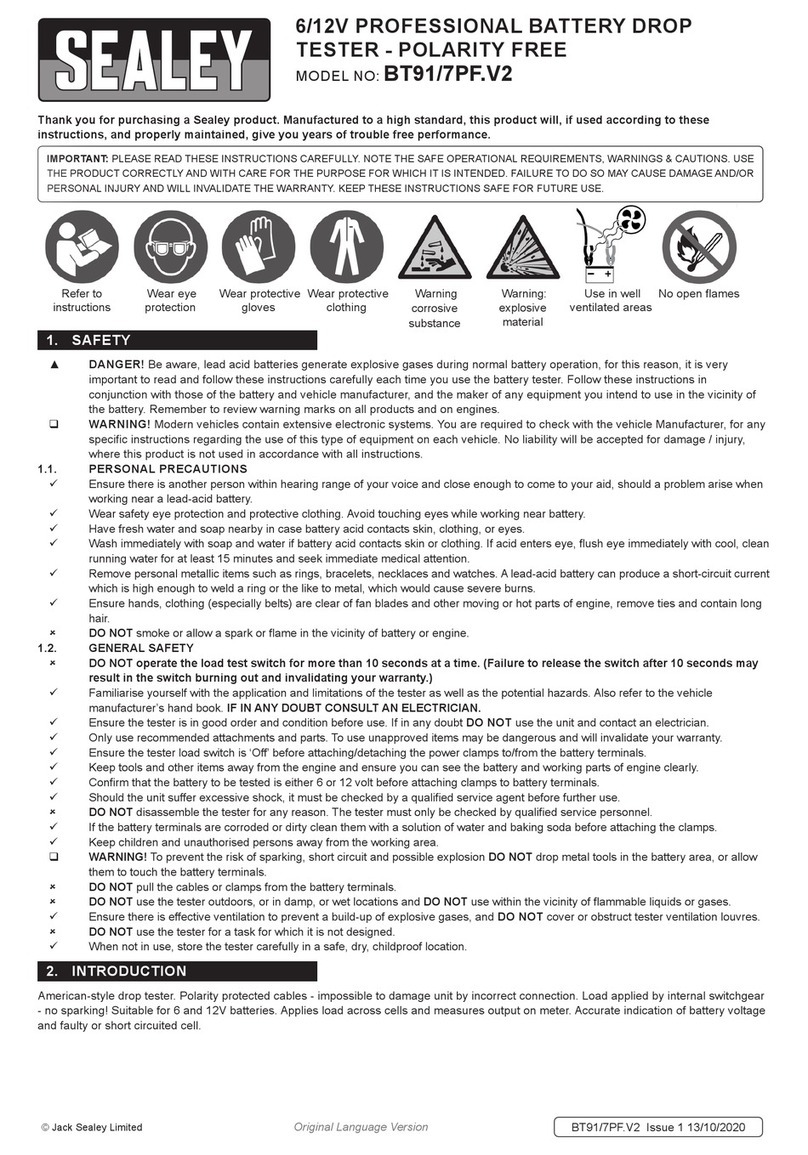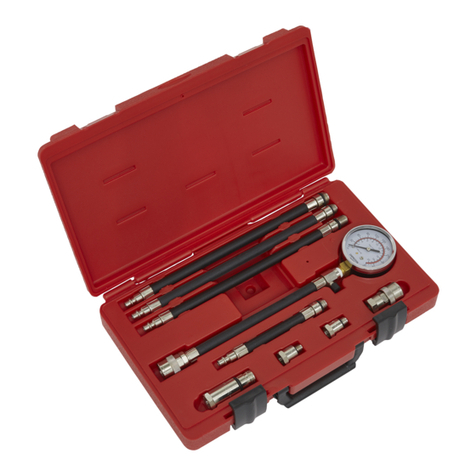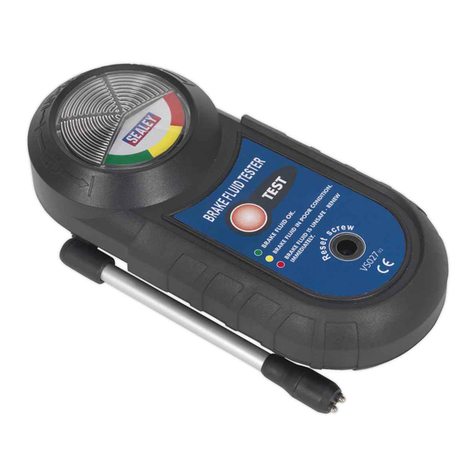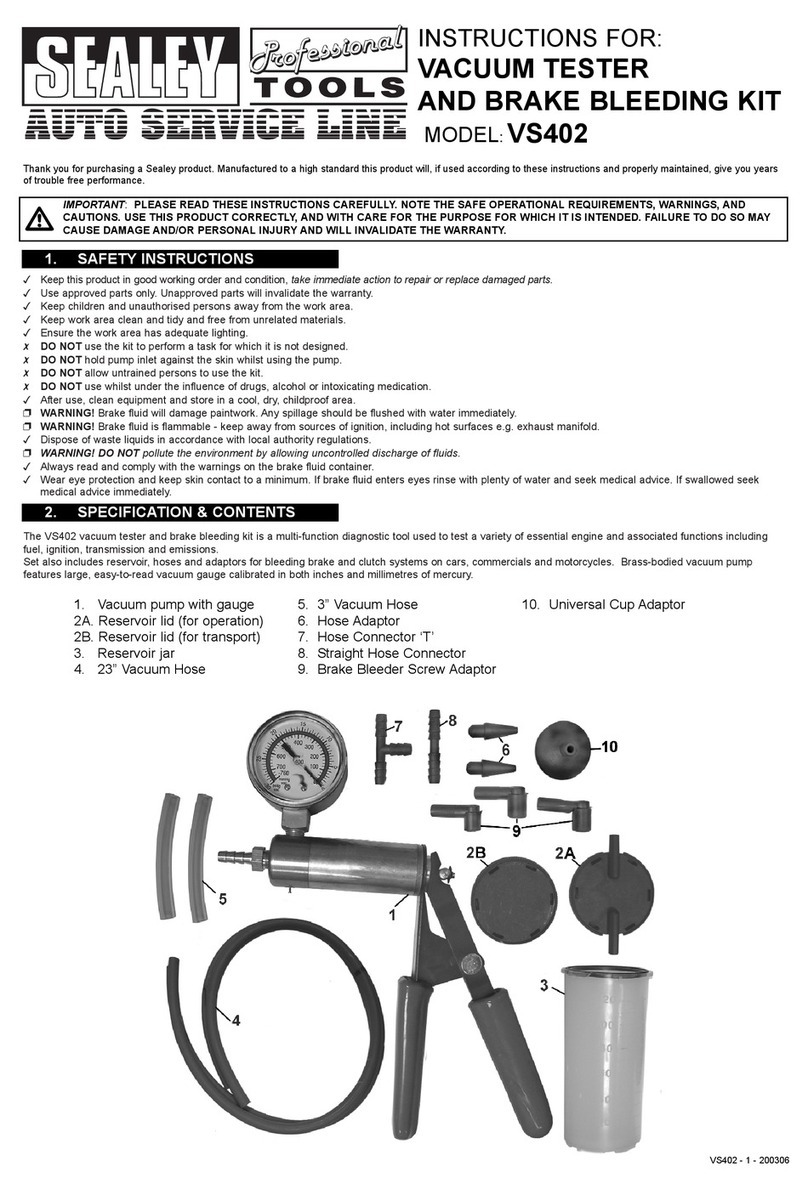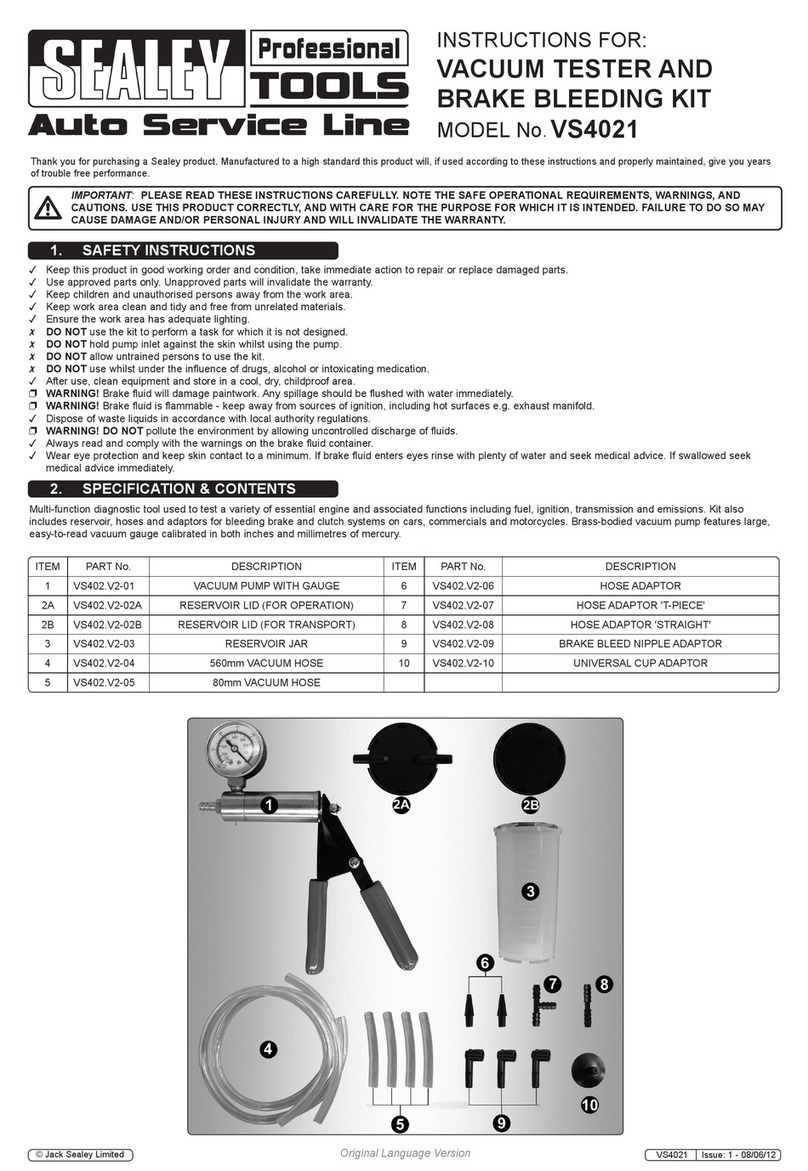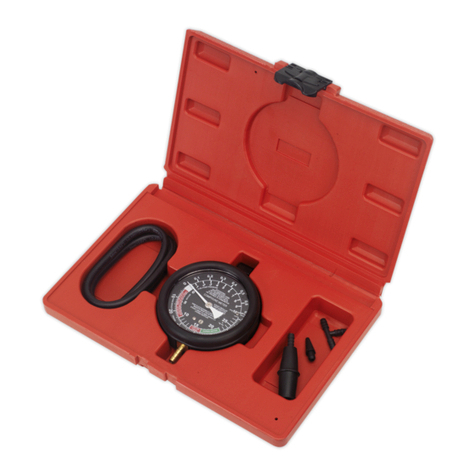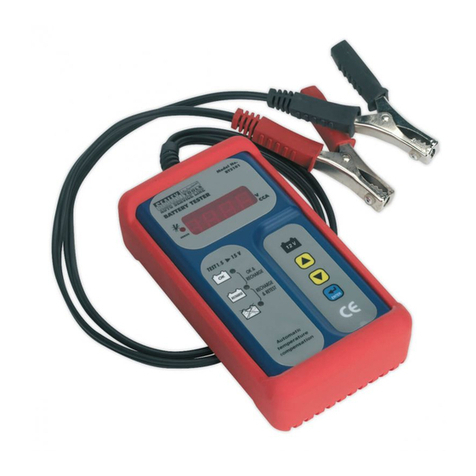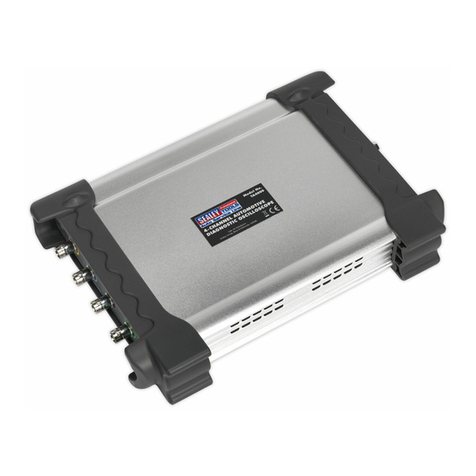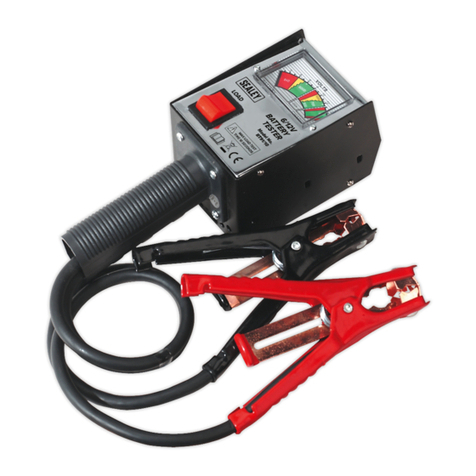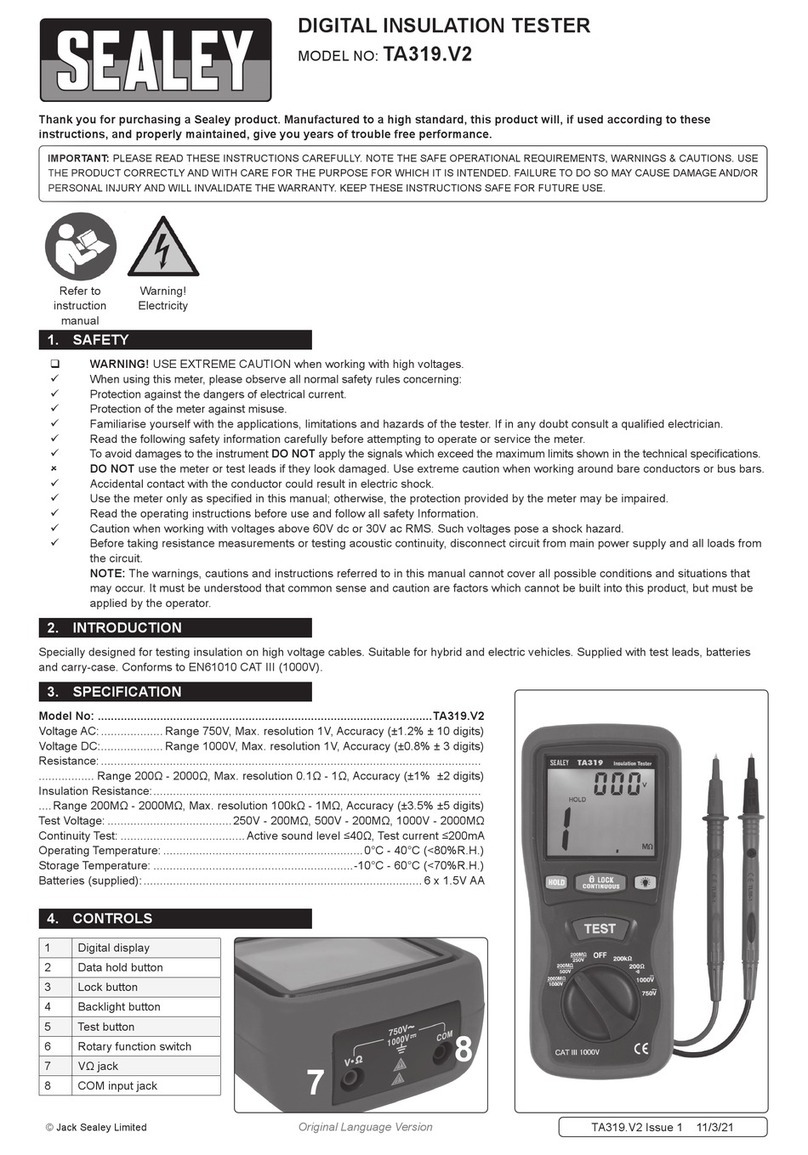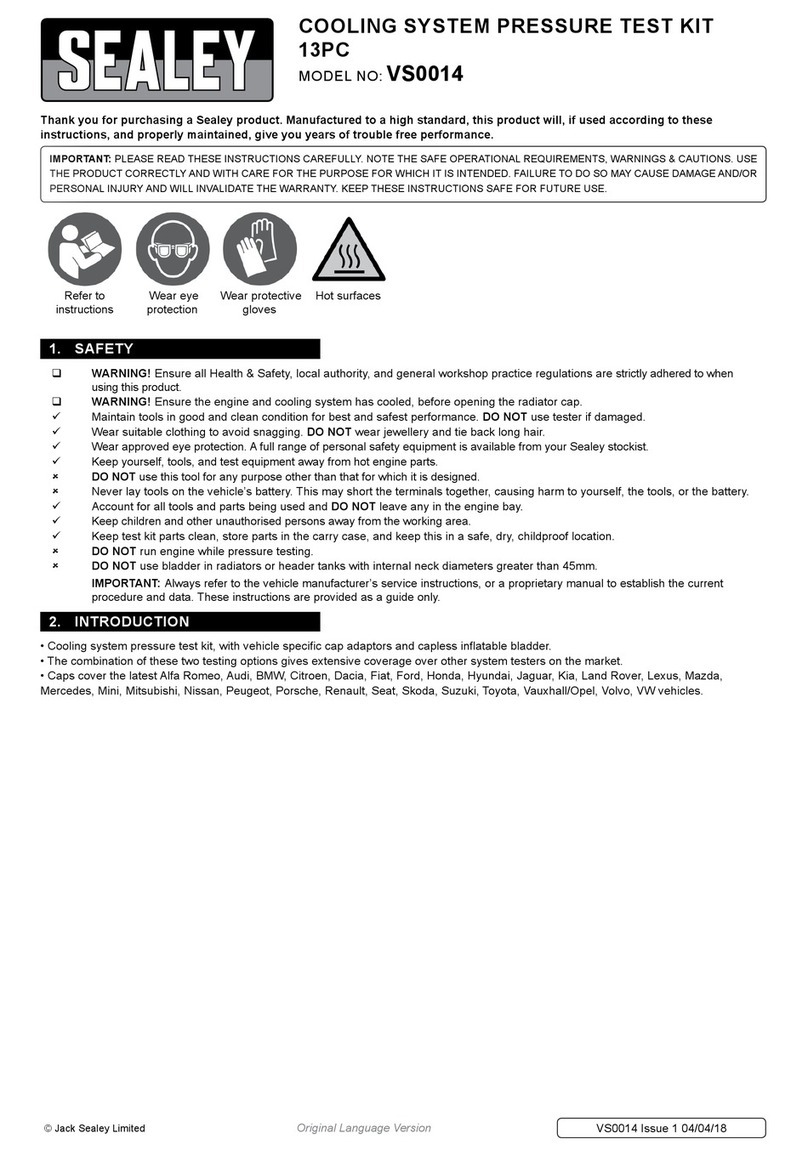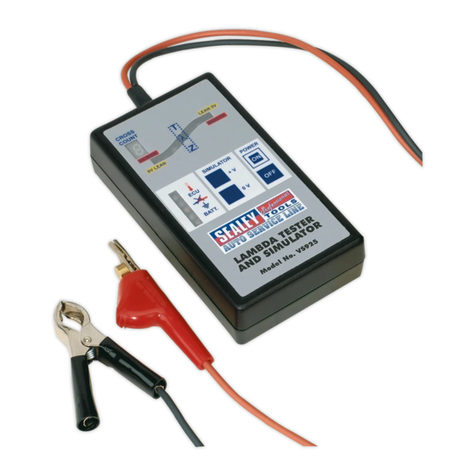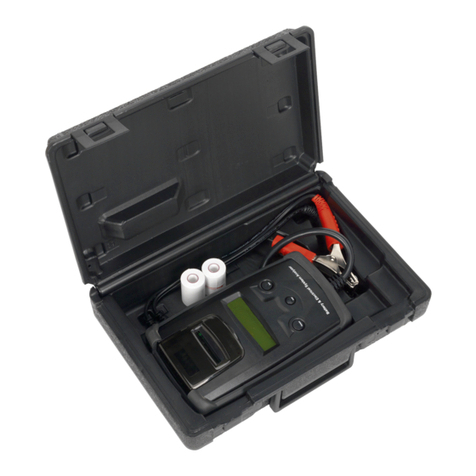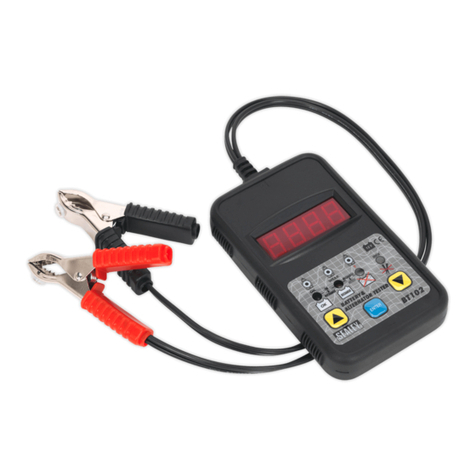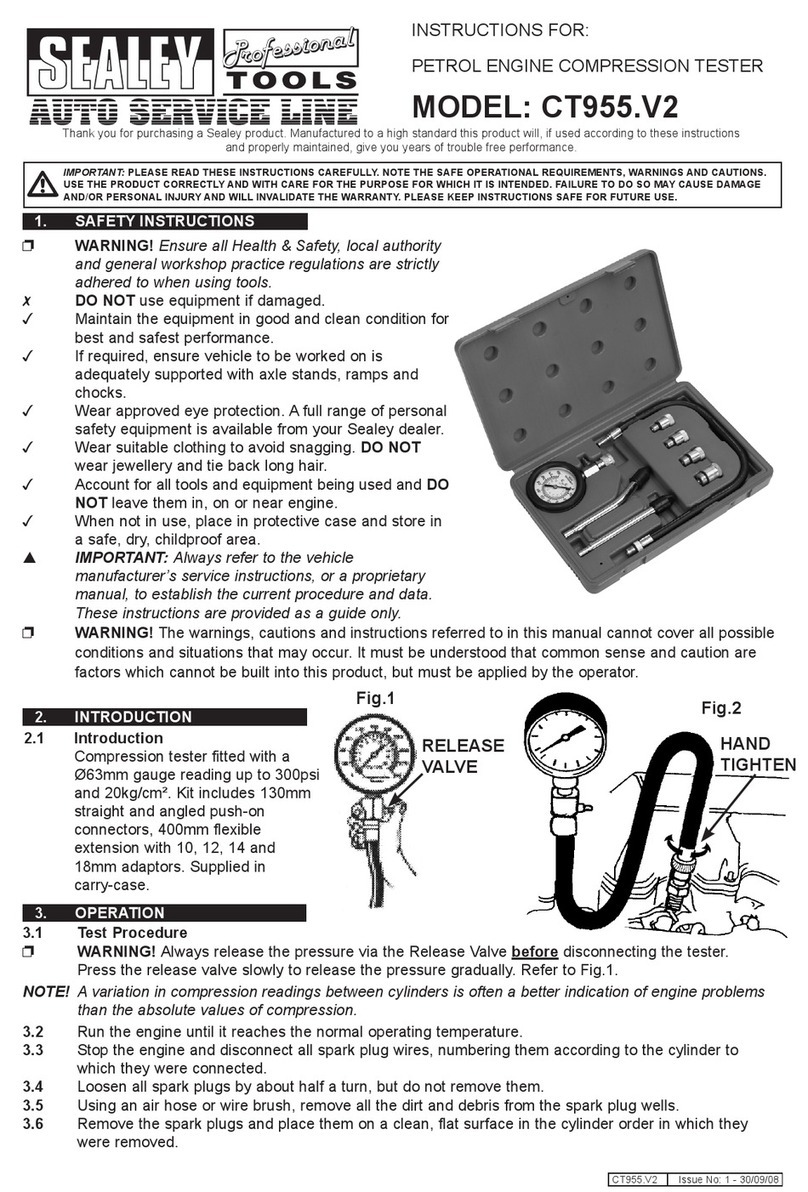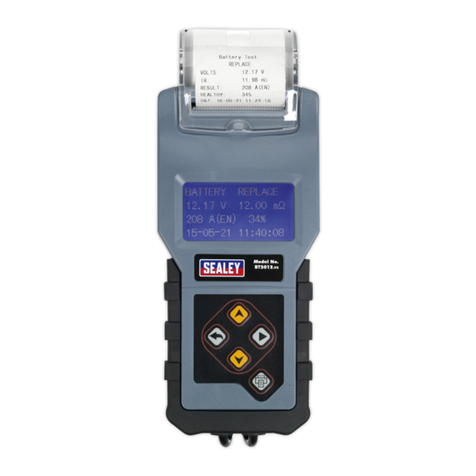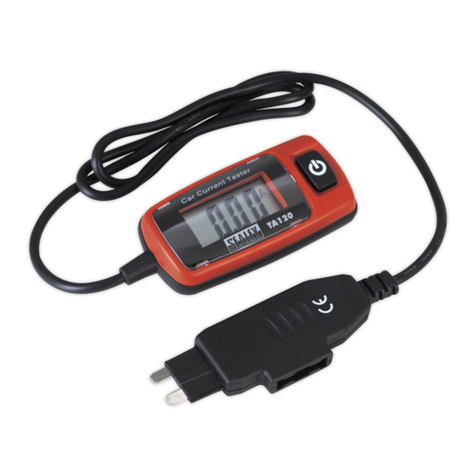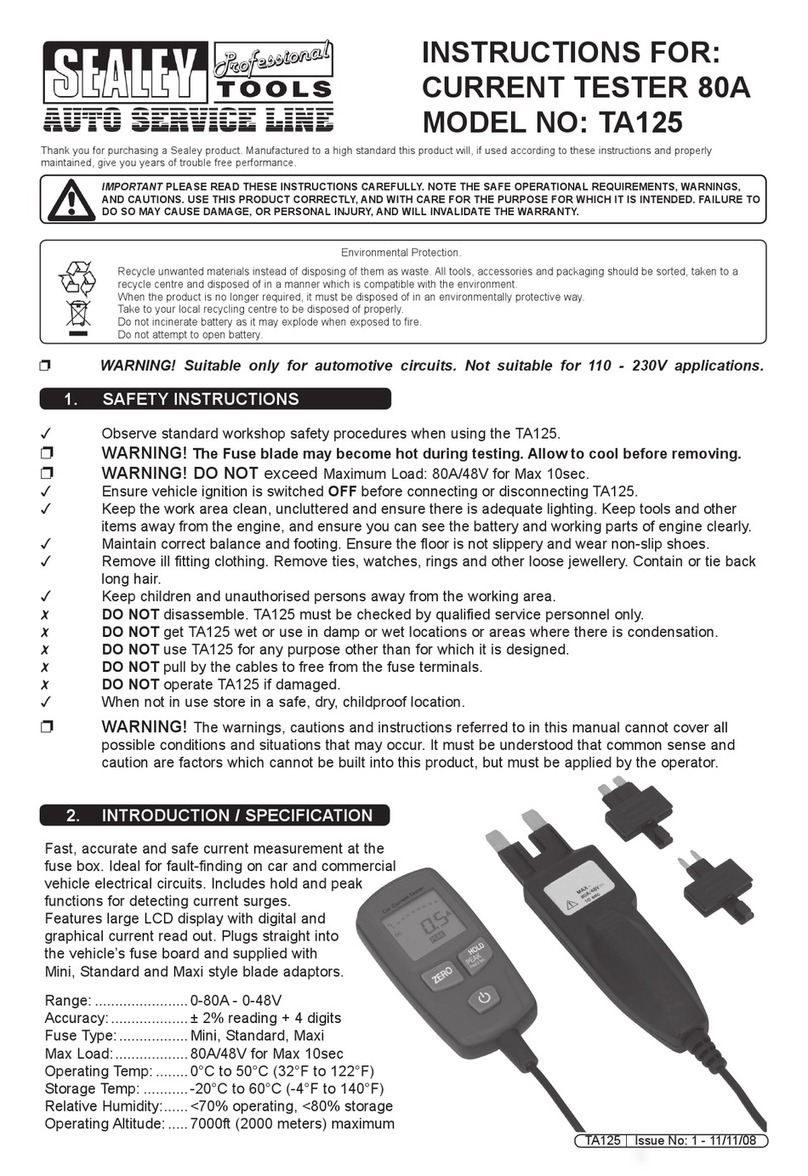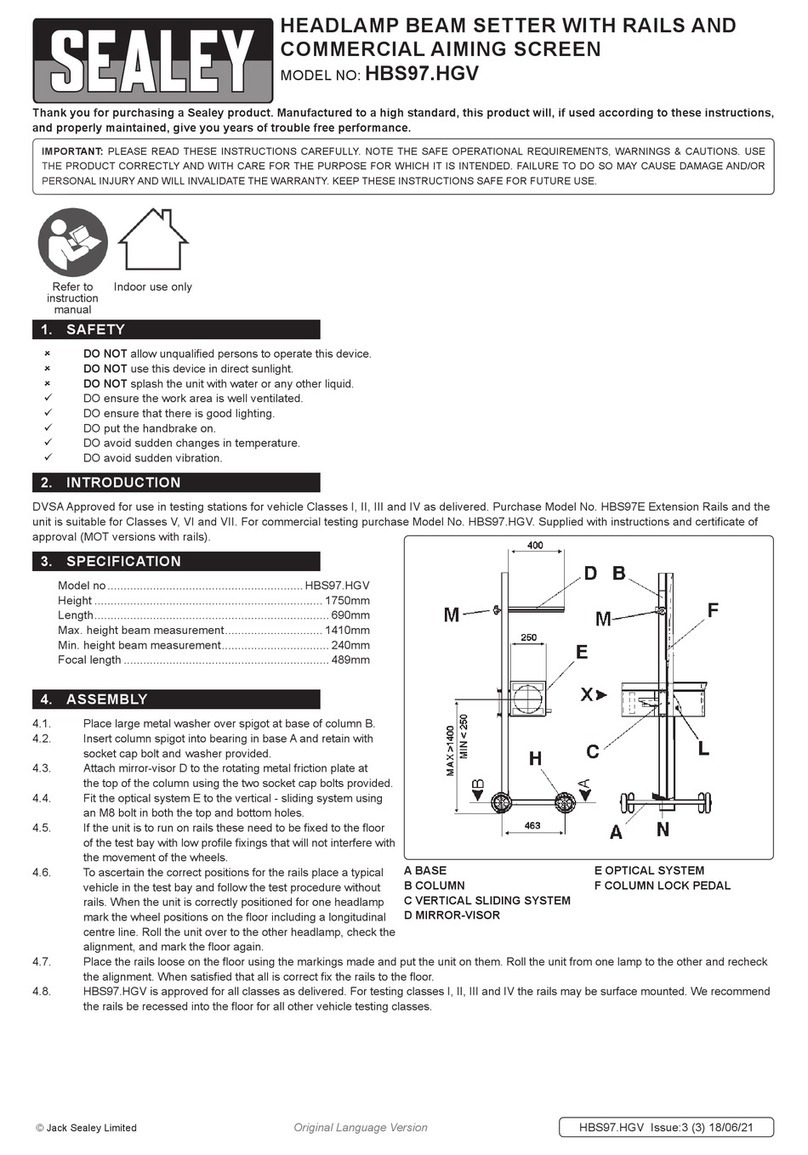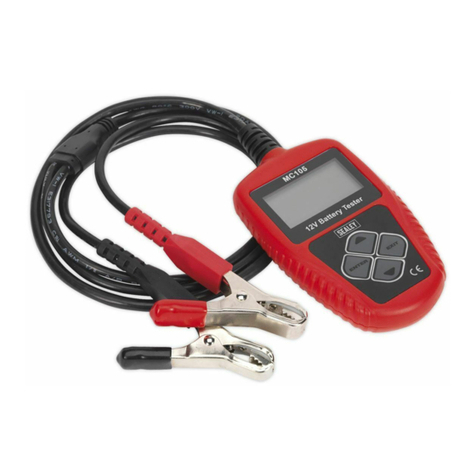
6. ADDITIONAL VACUUM SYSTEMS
6.1. Testing One-Way Valves
6.1.1. Many vacuum operated circuits use in-line one-way valves to apply vacuum in
one
direction only.
6.1.2.
To
test the function
of
the valve remove it from the circuit. Attach the VS402.V2 vacuum tester (fig.7) and operate pump to apply vacuum. In one direction
the valve shou
ld
hold vacuum and in the opposite d
ir
ection it should not.
6.2.
Testing
Electrically
Operated
Vacuum
Solenoids
6.2.1. Electrically operated vacuum solenoids are commonly used in control c
ir
cuits
for
airconditioning/ventilation systems, emission control syste
ms
, idle step
up
systems etc. and testing the function
of
these when using
the
VS402.V2
is
extremely simple.
6.2.2. Locate the solenoid to be tested and remove the line that goes to the component being tested. Connect the VS402.V2 to the solenoid port (fig.8) and start
the engine. With the system turned offthere should·be a zero gauge reading. Nowturn the system to the 'on' position and a gauge reading equal
to
the
manifold vacuum should be observed,
if
no
reading exists remove the vacuum supply line and test
for
manifold vacuum
at
this point. If the vacuum does
exist this indicates that the solenoid is faulty
or
it
is
no
t receiving a 'switch on' voltage (use a multimeter to test this). If no vacuum exists trace the supply
line backto the vacuum source checking
for
kinks and breaks.
6.3.
Testing
Thermal
Vacuum
Sw
itc
hes
6.3.1. There are
many
vacuum controlled circuits that must only operate when the en
gi
ne reaches nonnal operating temperature. This is done usi
ng
thennal
switches that remain in an
'off
position until a given temperature
is
reached.
6.3.2. To test this type of switch, remove the vacuum supply line co
mi
ng
from the manifold to t
he
switch and test for manifold vacuu
m.
If
this vacuum is correct refit
the supply line to the thermal switch and remove the opposing line from the switch. Attach the VS402.V2 vacuum tester to the
po
rt (fig.9) and start the
engine. With a cold engine
no
reading shou
ld
be noted. When the engine reaches nonnal operating temperature a manifo
ld
vac
uum reading should be
noted.
6.4.
Testing
Vacuum
Operated
Heater
Taps
6.4.1. Climate control ventilation systems are becoming very common on newervehicles and most of
the
systems use vacuum operated taps to control the heating
modes.
On
the majority
of
makes and models, the system uses vacuum to tum the heat
er
tap 'on'.
6.4.2. To test these remove the supply line from the tap vacuum m
od
ule and connect the VS402.V2 vacuum tester (fig.10). With the engine
at
nonnal operating
temperature locate and feel
the
heater return hose. With the heatertap in the '
otr
position, this hose should be cold. Now operate the vacu
um
pump to open
the tap.The gauge read
in
g must hold. If
the
tap is in working order. the retum hose will begin to heat.
If
the
ho
se does not begin to heat, this indicates that
the tap is faulty.
6.5.
Testing
Vacuum
Operated
Remote
Central
Locking
Systems
6.5.1. Some makes and models use vacuum operated bellows mounted in each
door
to centrally lock and
un
lock the
veh
icles doors. These systems use either
manifold vacuum stored in a reservoir
for
use when the engine
is
not
running
or
an electrically driven vacuum pump which operates
wh
en the doors are
locked
or
unlocked.
6.5.2. In either system, the VS402.V2 vacuum tester
is
ideal for testing each individu
al
door bellows. To do this. removA the door trims as required. Remove the
vacuum supply lines from the bellows and attach the VS402.V2 vacuum tester (fig.11 ) and operate to apply vacuum to the bellows. Wait
for
30 seconds,
no
drop on the gauge should be noted.
If
the bellows are found to be
in
order attach the vacuum supply line to the VS402.V2 vacuum tester and operate
system to test for vacuum supply.
If
the vacuum supply does not exist
or
is low trace back down the lines to the vacuum supply looking for kinks, restrictions
or
cracked lines. Repair as required and retest.
6.6.
Testing
Automati
c
Transmission
Vacuum
Operated
Modulator
Valves
6.6.1. Automatic transmissions are nonnally equipped with a vacuum operated modulator valve in order for the automatic transmission to detect engine loads and
adj
ust
shift points to suit. ·
6.6.2. The VS402.V2 vacu
um
tester can be used to test both that the modulation valve diaphragm
is
serviceable and
al
so to simulate varying engine loads so
modulator pressure readings can be recorded.
To
test the modulator valve diaphragm remove
the
vacuum supply line from the valve and attach the
VS402.V2 vacuum tester. Operate t
he
vac
uum pu
mp
until approximately 15in
Hg
is achieved
and
monitor
the
gauge
reading
for
approximately 30 seconds.
No
vacuum drop should be noted.
6.6.3.
To
ctle
ck modulator pressure readings attach a pressure gauge to the appropriate port
on
the transmission. RerllOYe the
vaaMTI
supply
line from the
modu
la
tor and attach the VS402.
V2
vacuum tester (fig.
12
). Start and run the engi
ne
and apply
vac
uum pressures.
Monitor
readings and confinn that
these
are in conformance with manufacturer specifications.
(
C>
J
ac
k Sealey Umited
l
To
Manifold
) Vawum
Original Language Version ( VS402.V2 I Issue: 1 •
2210
51
12
)

